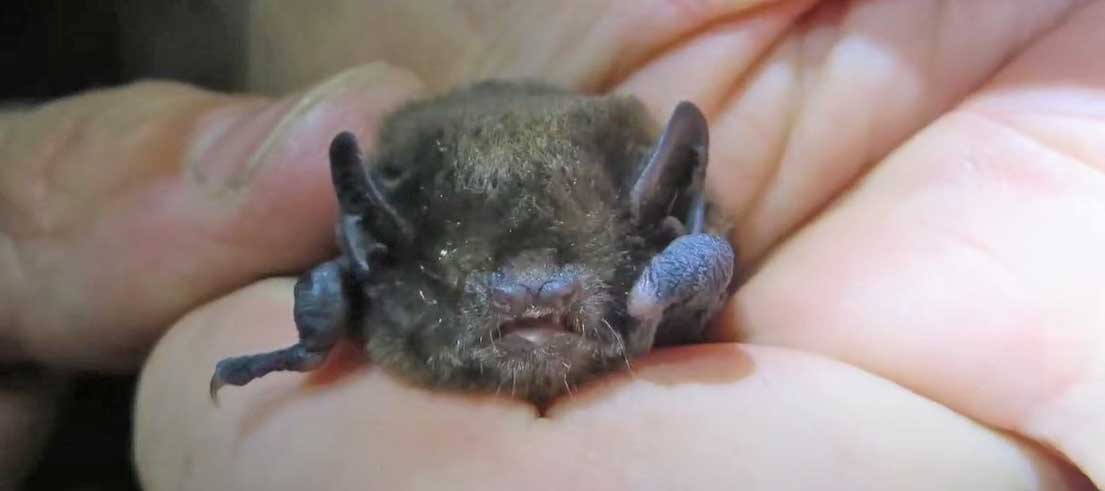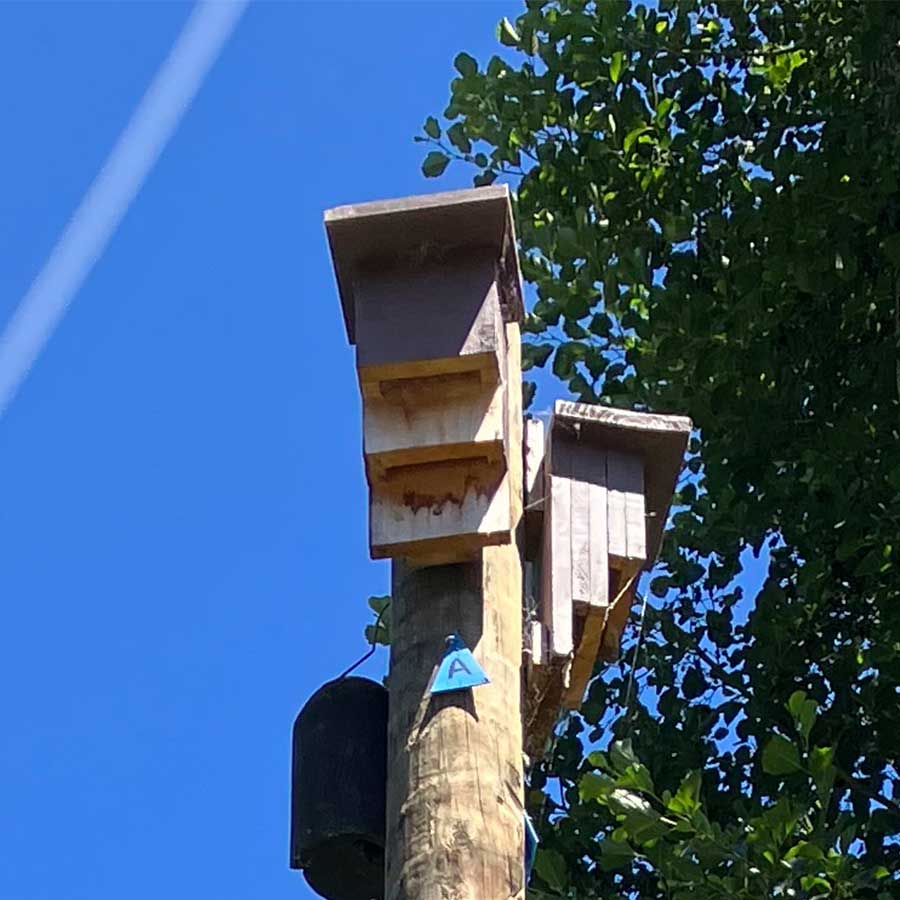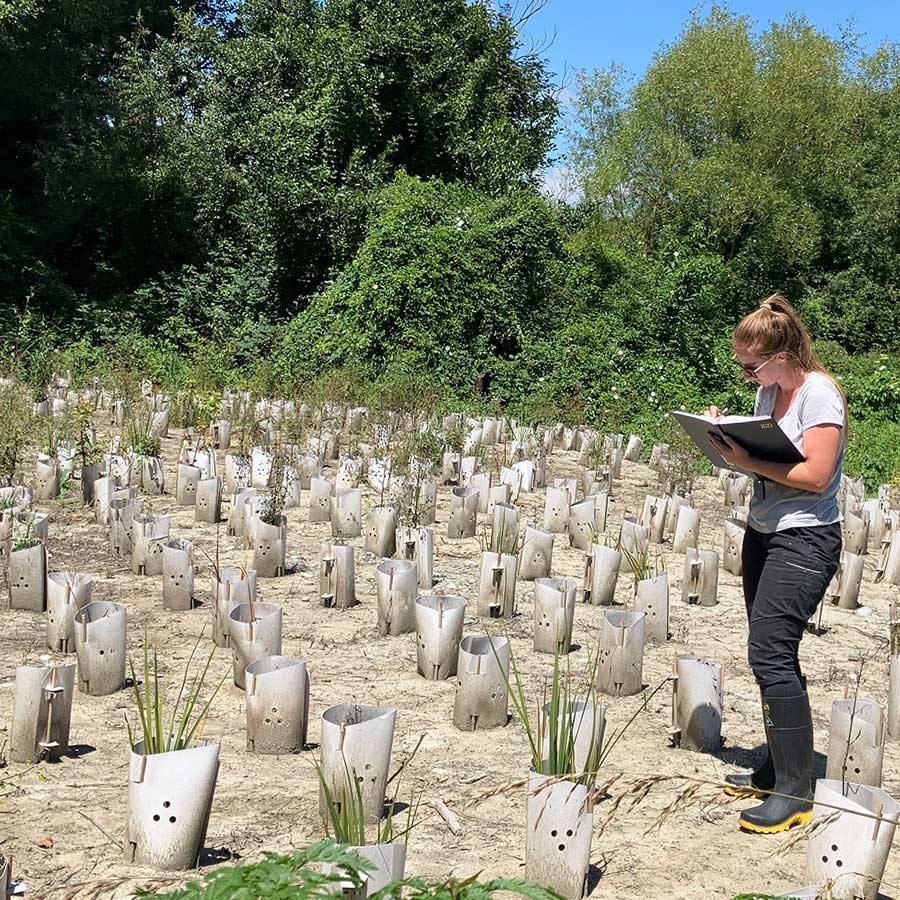
Collaborating a win for native bats
Our 2021 native bird of the year, the pekapeka-tou-roa (native long-tailed bat) has a boosted roost habitat thanks to iwi and government working in partnership.
At the confluence of the awa Te Ana a Wai (Tengawai) and Ōpihi, several repurposed telephone poles have been installed with huts added to the top for the pekapeka.
The poles fulfil the objective of Te Rūnanga o Arowhenua to provide kaitiakitanga to New Zealand’s only native land mammal and they are managed by the Department of Conservation (DOC) as part of the organisation’s species protection works.
We’re supporting the roosting site through our berm transition project.
Braided River Revival Regional Lead, Greg Stanley, explains “We’re making an investment into the quality of the habitat around there, creating a stronger native sub canopy community in the long term.
“This location is one of several DOC has installed on Te Ana a Wai. Our collaboration is thanks to a joint interest at the Ōpihi – Te Ana a Wai confluence where flood protection, kaitiakitanga, recreational and ecological values come together.”
The berm transition project
As part of this project, we are transforming sites on 23 rivers throughout Waitaha Canterbury through planting and targeted weeding.
Targeted weeding means leaving flood protection trees, native undergrowth, and native forest untouched while eliminating pest plants like old man’s beard, wild hops, hemlock and Chilean flame creeper.
View the berm transition project sites through our online map.
The Regionwide Berm Transition Project is part-funded by the Ministry of Business, Innovation and Employment’s Kānoa – Regional Economic Development and Investment Unit (64%), with the remainder co-funded by us through a combination of contributions from partners and operational funding/rates.
Collaborating for pekapeka
Since July 2022, we’ve planted almost 13,000 native species at the site including ribbonwood, makomako and kānuka, with 1005 to install this coming winter. Benefits of our project include increasing habitat for pekapeka and manu, decreasing flood risk by supporting our flood protection trees, and increasing seed source to re-establish native plant growth.
A six-metre radius is left around each pole to allow DOC to maintain and monitor the pekapeka roosts.
Regeneration project supervisor Dani Devine says the planting will create habitat and food for pekapeka that are resting there “and hopefully help their populations increase.” Another benefit Dani says is, “the plantings are so big they should be able to naturally act as a barricade to the weeds coming back in.”
The berm transition team piggybacked on relationships between Te Umu Kaha (Temuka) depot rivers operational team with the Department of Conservation Geraldine office and Te Tihi o Maru (Timaru) office with Te Rūnanga o Arowhenua.
“The relationships were already in place. We came in, met the people, and checked that our plans were aligned with the work that was already in hand,” Greg explained.
Protecting the values of the Ōpihi and Te Ana a Wai
The awa Te Ana a Wai (Tengawai River) has high infrastructural and recreational value.
Beyond the pekapeka population that rest and roost here, the river features bridges and roads, mountain biking, horse and walking trails, and natural flood protection infrastructure.
It is these features that made Te Ana a Wai an ideal site to include as part of our project along the Ōpihi, representing over 54ha of the total 217ha that will benefit from weed control and native enhancement planting.
Central Government long-term co-investment
Significant flood protection, biodiversity and community projects like this have been made possible due to the Government’s one-off COVID-19 response shovel-ready funding. However, climate change induced events across the country have highlighted the urgent need to remediate flood protection infrastructure that has become outdated.
Currently, regional and unitary councils invest about $200 million each year in flood protection schemes. This is estimated to fall short of what’s needed by $150 million per annum. Read about why co-investment is critical to the future of flood protection.
Funding maintenance and upgrades for flood protection assets is no longer sustainable for local communities. We need allied national support to face this challenge together.
It is clear that shared investment today means lower overall recovery costs and better protection for the environment, for both current and future generations.


